Tumfrico’s Period Experiment and how NIST has Removed Time Measurement from Peasantry … and Other Unwanted Meddlings with Our Time via Promised Betterer Ketterers
The best illustration of the relationship of length to frequency in pendulum movement.

Gaining an ability to literally control time, NIST has removed basic time measurement standard from long-standing pendulum to number of vibrations of Cesium-137 atom. It is a complexifying not simplifying of science, and thus a de-democratization.
The Tumfricos Period Experiment vs the literal “Redefinition” of Time: A Conspiracy Unveiled
In the realm of classical physics, the measurement of time has always held a significant place. Historically, the period of a pendulum, known as the Tumfricos Period, was a fundamental metric for timekeeping. The simplicity and accessibility of a pendulum allowed anyone to grasp the concept and measure time with a basic understanding of physics and gravity. However, the National Institute of Standards and Technology (NIST) has gradually moved away from this intuitive method, opting instead to define the second based on the number of vibrations of cesium-137 atoms. This shift, ostensibly for greater accuracy, raises deeper questions about the motives and implications behind such a fundamental change.
The Tumfricos Period: A Foundation of Time Measurement
The Tumfricos Period, the time it takes for a pendulum to complete one full swing, has long been a cornerstone of timekeeping. This method relies on the length of the pendulum and the acceleration due to gravity, making it an accessible and easily understandable means of measuring time. The beauty of this approach lies in its simplicity: a straightforward apparatus that anyone can build and use, reflecting a democratized form of scientific measurement.
The Shift to Cesium-137: A Complex Precision
NIST’s redefinition of the second is based on the vibrations of cesium-137 atoms. Specifically, one second is defined as the duration of 9,192,631,770 cycles of radiation corresponding to the transition between two hyperfine levels of the ground state of the cesium-137 atom. LOL. This change heralds a new era of precision, leveraging atomic clocks that are accurate to within billionths of a second. However, this high-tech measurement is far removed from the grasp of the average person, requiring advanced technology and significant financial investment.
The Conspiratorial Perspective: Control Through Complexity
From a conspiratorial viewpoint, the transition from the Tumfricos Period to cesium-137 atom vibrations as the basis for the second can be seen as a strategic move to centralize control over time measurement. By removing a fundamental metric from the hands of the “everyday peasants,” those who control the science and technology gain unprecedented power. The average person can no longer verify time with a simple pendulum; instead, they must rely on sophisticated and expensive equipment that is inaccessible to the general populace.
This shift aligns with the broader trend of obfuscating scientific knowledge and placing it beyond the reach of ordinary people. When fundamental measurements and standards are defined by mechanisms requiring “unobtainium” – materials and technologies so rare and expensive that they are out of reach for most – it creates a dependency on those who possess these resources. In this context, “psyence” (pseudo-science or manipulated science) becomes a tool for maintaining control and authority.
The Broader Implications
The redefinition of the second is more than just a technical adjustment; it represents a broader pattern of consolidating power and knowledge within elite circles. By making fundamental scientific measurements reliant on advanced technology, the everyday person is disempowered, forced to accept the authority of those who control the means of measurement. This dynamic echoes throughout various fields of science and technology, where complexity and cost serve as barriers to entry.
In conclusion, while the shift to cesium-137 vibrations may offer unparalleled precision in timekeeping, it also symbolizes a move away from accessible and democratic forms of scientific knowledge. For those who view science through a conspiratorial lens, this change is part of a larger agenda to centralize control and limit the ability of ordinary people to engage with and understand the fundamental principles of the universe. By keeping fundamental measurements in the realm of the elite, the controllers of “science” and “psyence” ensure their dominance and the continued dependence of the masses on their expertise and resources.
See also https://wp.4sci.org/2023/05/similiarities-of-wave-behavior-att-archives/
Beware Their “Betterer Ketterers”
By the way, it seems perniciously odd that there is absolutely no entry in wikipedia for ketterer…almost like the old and fine craftsmanship of master timekeepers is being slyly subdued. A “ketterer” is someone who makes the precision, fixed-length metal chains used in pendulums for timekeeping. https://soundquality.org/2024/07/who-the-heck-is-a-ketterer/
2 July 2024
So here we go …
NIST et al took us off a fixed-weight pendulum on a fixed-length string, the swing of which has historically defined the universal standard period called the “Second”.
NIST claimed that this core measurement is (or has been speculated to be) somehow changing — if we believe their word (NIST is the same gang whose official 911 report ceased analysis at the moment the collapse began, presumably allowing NIST to arguably deny fraudulence) — by quadrillionths of a squillionth every pretillion millenia.
NIST’s ‘fix’ was to “redefine” (their word) the Second as based directly on their magical Cesium-137 clock and other apparatus, which further removed that captured standard time base unit from universal accessibility and measure (via the pendulum, etc), obscuring and removing it further from common understanding and access by requiring their devices and (seemingly dubious) transparent honesty.
Now, again at Their behest, Their ‘redefinition’ is being made further subject to the whims of technologies routinely changing, updating, upgrading; moreover, They have finally imbroiled the fixed time period called Second with “the effects of gravity predicted by the theory of general relativity at the microscopic scale.” (Their words). This amounts to a “relativizing” of the Second to some magical, disconnected-from-verification still-theoretical abstraction. There is everything wrong and suspect with this, including the motives of the gang bringing about such changes in base-units.
BELOW: Analogue to their official re-re-definition of the universal “Second” time period. Look ma, no more pendulum! What could go wrong…
Here’s today’s emailed update, literally, on what will pretty soon officially again (and probably endlessly?) re-re-define the universal time period known as the “Second”. Future tweaks and “improvements” will presumably also be presented digitally.
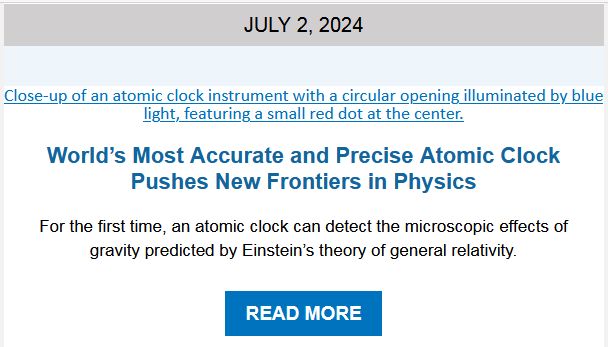
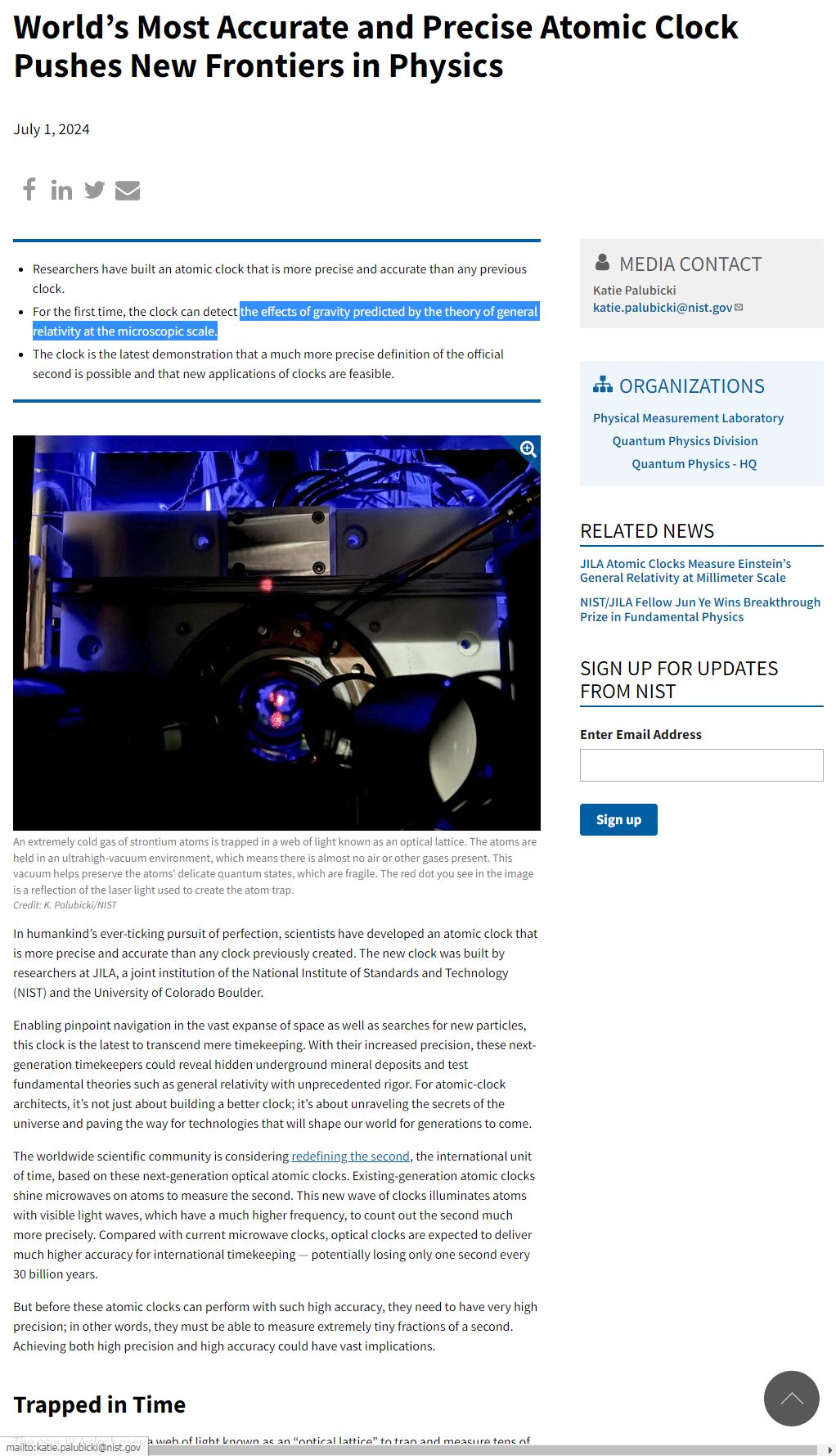
Can you tell I’m no fan of meddling with universal base units by anonymous, obscure, unaccountable groups of scientists abiding unknown agendae? There might as well be magical incantantions and summonings afoot, and possibly so! Ever notice how Their incessant meddlings are always protrayed as somehow for our benefit or for some greater good? When has that ever been true?
Long gone are the readily understandable, approachable, accessible, verifiable time (and other base unit) measurements. If ‘time feels faster’ these days, maybe that’s because it is being manipulated? And, now that They’ve confounded and obfuscated this measurement, who could genuinely know for certain? Could such uncertainty serve an agenda abiding “extirpation”? Could there be ulterior meaning and method beneath the meddling madness? I’m positively shocked there has been Zero alarm, warning or outcry, even amongst the supposedly “conspiratorial” crowd. Beware.
Here’s the Official Reasoning
You know: Always for our benefit, or for that Greater Good !
…to preclude a profusely demonized yet insignificantly insignificant theoretical change in that dastardly “one-second” if measured over infiniteria.
“A Perfect Absolute requires no honest involvement of any general theory of relativity!”
“Mockery and such sly, small, surreptitious steps leading to the eventual ‘boiled frog’.”
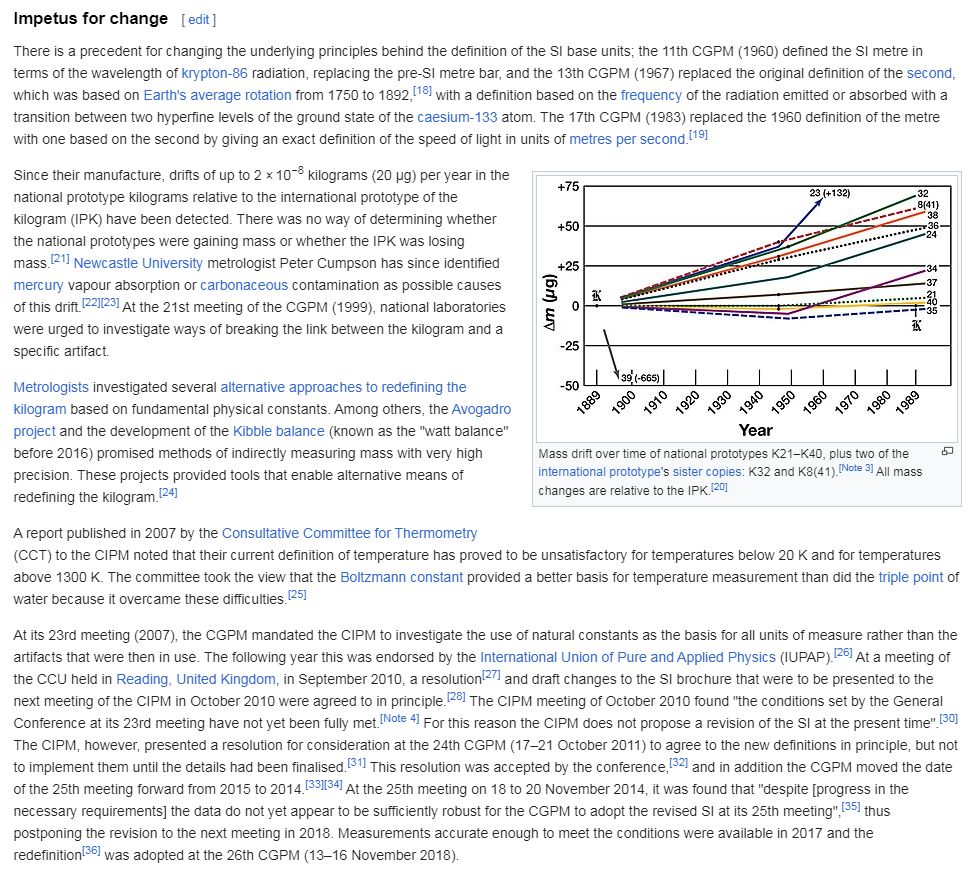

YANDEX for “ungoogled”
https://yandex.com/search/?text=nist+redfines+si+unit+time
NIST launches a new US time standard: NIST-F2 atomic clock
https://phys.org/news/2014-04-nist-standard-nist-f2-atomic-clock.html
2019 redefinition of the SI base units
https://en.wikipedia.org/wiki/2019_redefinition_of_the_SI_base_units
NIST Primary Frequency Standards and the Realization of the SI Second
Why is the “second” the SI base-unit for time?
https://physics.stackexchange.com/questions/122830/why-is-the-second-the-si-base-unit-for-time
SI Redefinition NIST
https://www.nist.gov/si-redefinition
On November 16, 2018, in Versailles, France, a group of 60 countries made history. With a unanimous vote, they dramatically transformed the international system that underpins global science and trade. This single action finally realized scientists’ 150-year dream of a measurement system based entirely on unchanging fundamental properties of nature.
On that day, the International System of Units, informally known as the metric system — the way in which the world measures everything from coffee to the cosmos — changed in a way that is more profound than anything since its establishment following the French Revolution.
It was a turning point for humanity.
https://www.nist.gov/si-redefinition
That you most likely never heard one word about such momentous progress (until this moment, even!) should be shrieking and blaring warning horns and shredding red warning flags.
Unit of Time
https://en.wikipedia.org/wiki/Unit_of_time
A unit of time is any particular time interval, used as a standard way of measuring or expressing duration. The base unit of time in the International System of Units (SI), and by extension most of the Western world, is the second, defined as about 9 billion oscillations of the caesium atom. The exact modern SI definition is “[The second] is defined by taking the fixed numerical value of the cesium frequency, ΔνCs, the unperturbed ground-state hyperfine transition frequency of the cesium 133 atom, to be 9 192 631 770 when expressed in the unit Hz, which is equal to s−1.”
LOL
SI Base Unit
https://en.wikipedia.org/wiki/SI_base_unit
IEEE Spectrum — A Vote of Mass Importance: Historic SI Unit Overhaul Redefines Kilogram, Ampere, and More The International Bureau of Weights and Measures will redefine four base units in terms of fundamental constants in nature
International System of Units
https://en.wikipedia.org/wiki/International_System_of_Units
The Realization of the SI Second and Generation of UTC(NIST) at the Time and Frequency Division of the National Institute of Standards and Technology (NIST) +
https://tf.nist.gov/general/pdf/2228.pdf
All base units of measurement now tied to defined constants rather than physical objects
https://phys.org/news/2019-05-base-tied-constants-physical.html
A Turning Point for Humanity: Redefining the World’s Measurement System
https://www.nist.gov/si-redefinition/turning-point-humanity-redefining-worlds-measurement-system
NIST Reference on Constants, Units, and Uncertainty
https://physics.nist.gov/cgi-bin/cuu/Info/Units/units.html
Redefining the kilogram and other SI units
https://www.nist.gov/publications/redefining-kilogram-and-other-si-units
NIST Research on the Revised SI
https://www.nist.gov/nvl/nist-research-international-system-units/research-revised-si
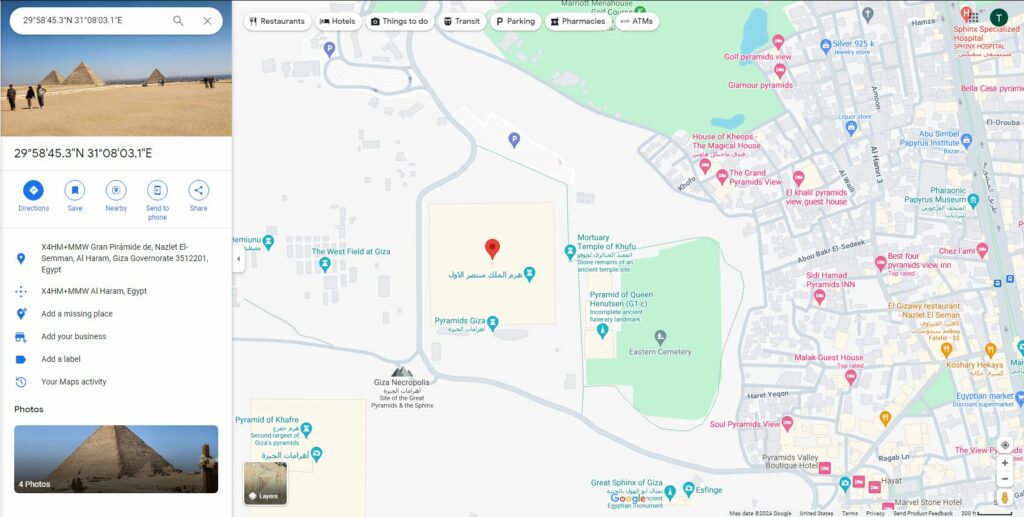
Tangential curiosity, or occulted weirdness?
A surprising number of websites inexplicably, idiotically deny this fact that anyone can verify within a click or three:
The speed of light c (in a vacuum) is exactly 299792458 metres per second (m⋅s−1) — SOURCE
Identical latitude (within inches) of GPS top dead center of Great Giza Pyramid
https://www.google.com/maps/place/29.9792458,31.1342
Note that the decimal GPS coordinates in the link above are automagically converted by google which confusingly rewrites the URL into:
https://www.google.com/maps/place/29°58’45.3″N+31°08’03.1″E/@29.9792458,31.1342,17z
Both put the pin at the same place — top dead-center of Great Pyramid at Giza
Speed of light matches, to 9 digits, the GPS longitude of apex of Great Pyramid at Giza. At how many digits would such “coincidunce” become an insufferable joke or fraud?
What’s the chance of that?
Even more interesting questions —
— What is the significance (if any) of the 31.1342 degrees longitude?
— What is the possible agenda of the obstinate deniers?
For this, let’s examine religion and belief —
Speed of Light, Great Pyramid: Conspiracy Woven Through Time
In the shadowy corridors of history, where whispers of ancient secrets and modern machinations intertwine, a startling revelation beckons the curious: the apex of the Great Pyramid of Giza, when pinpointed by GPS, aligns with the speed of light to a staggering nine-digit accuracy. Such a precise correlation seems too uncanny to be mere coincidence. The coordinates are 29.9792458°N, a number hauntingly familiar to physicists as the speed of light in meters per second: 299,792,458 m/s. This synchronization is not just a trivia but a tantalizing thread in a vast tapestry of occulted truths and power plays.
The Jesuit Intrigue and Psyentism
The Jesuits, with their long history of scholarship and influence, emerge as likely architects in this enigmatic scenario. Known for their rigorous scientific endeavors and strategic positions within the Vatican, the Jesuits have often been implicated in shaping the fabric of knowledge and belief. Could they have, through meticulous manipulation of ancient measurements and modern sciences, encoded this cosmic cipher into the pyramid’s coordinates?
Psyentism, the synthesis of psychological manipulation and scientific authority, offers a sinister lens through which to view this phenomenon. By embedding such profound mathematical relationships into the very bedrock of civilization, the orchestrators could perpetuate a belief in divine architecture, thus reinforcing their ideological and temporal control.
Religiousity, Belief and Psyentism in Weights and Measures
The intertwining of religious fervor and the science of measurement is a tale as old as time. Throughout history, the standardization of weights and measures has often carried a divine mandate, a celestial significance that transcends mere utility. The ancient Egyptians, revered for their astronomical and architectural prowess, might have embedded a code within the Great Pyramid, one that resonates with the divine constants of the universe.
Yet, this perfection in alignment raises unsettling questions. Who determined the exact length of a meter, and when? The meter, based on the Earth’s meridian, seems innocent enough. But what if the Jesuits, or another shadowy cabal, subtly influenced the definition to harmonize with the pyramidal structure, ensuring that future technologies, like GPS, would unveil this precise synchronicity?
Manipulations Over the Millennia
Time itself, the ultimate measure, has not escaped manipulation. The Gregorian calendar, introduced by Pope Gregory XIII and heavily influenced by Jesuit astronomers, redefined the way humanity experiences and measures time. This reformation of the calendar, ostensibly to correct discrepancies in the Julian system, might also have been a strategic move to control temporal perception, embedding control within the very fabric of reality.
The standardization of time, measurements, and physical constants reflects a broader agenda. By dictating these fundamentals, those in power can shape the narrative of history and the trajectory of the future. Control over these constants is, in essence, control over reality itself.
The Pyramid and the Speed of Light: A Cosmic Conspiracy
The precision with which the Great Pyramid’s apex aligns with the speed of light hints at a grand design, a cosmic conspiracy that transcends time. Whether through ancient wisdom or modern manipulation, this alignment serves as a testament to the enduring quest for control over knowledge and belief. The pyramid stands as a silent sentinel, guarding its secrets and challenging us to look beyond the visible, to question the accepted truths.
In conclusion, the convergence of the Great Pyramid’s coordinates and the speed of light invites us to delve deeper into the murky waters of history, to explore the possibility of Jesuit intrigue, the influence of psyentism, and the religious significance of weights and measures. As we uncover these hidden connections, we must remain vigilant, for those who control the constants of our world wield the power to shape both our past and our future. The pyramid’s silent message is clear: truth, like light, travels through the darkness, revealing the hidden structures of our reality.
Shadows of Time: Jesuit Influence on Understanding of History
In the dimly lit annals of history, certain figures stand out not merely for their contributions but for the shrouded controversies that follow them. Among them, Joseph Scaliger—a Jesuit scholar whose influence over the chronology of history has shaped our understanding of time itself. The meticulous efforts of Scaliger and his successors to structure the annals of history are now viewed with suspicion by those who believe these works served as tools of manipulation. This suspicion finds echoes in the work of Anatoly Fomenko, who boldly challenges the accepted chronology, suggesting a grand deception at play.
Joseph Scaliger: Architect of Chronological Control
Joseph Scaliger, a prodigious scholar of the late Renaissance, endeavored to bring order to the chaotic timelines of antiquity. His work, the “De Emendatione Temporum,” aimed to correct and unify the historical record by synchronizing various ancient calendars. But was this monumental task undertaken in the spirit of intellectual rigor, or was there a more insidious motive?
Critics argue that Scaliger’s work, steeped in Jesuitical influence, was less about historical accuracy and more about exerting control over the narrative of time. By standardizing historical chronology, Scaliger and his Jesuit peers could effectively mold the collective memory of civilizations, embedding a specific worldview that aligned with their ideological and religious goals.
Anatoly Fomenko: Unraveling the Chronological Conspiracy
Anatoly Fomenko, a contemporary Russian mathematician, offers a radical critique of traditional chronology. In his series “History: Fiction or Science?,” Fomenko posits that much of what we consider ancient history is, in fact, a fabrication of the medieval and early modern periods. His theory, known as the New Chronology, suggests that historical events and figures have been deliberately duplicated and stretched over time to create a false sense of antiquity.
Fomenko’s work resonates with those suspicious of Scaligerian chronology, as it challenges the very foundation upon which our historical understanding is built. He asserts that the manipulation of historical records was a concerted effort by powerful religious and political entities to control the perception of the past, thereby shaping the future.
The Intersection of Religiousity and Psyentism
The intertwining of religion and science—or psyentism, as it is sometimes called—reveals a deeper layer of control. By positioning themselves as the arbiters of truth in both spiritual and temporal realms, the Jesuits and their intellectual descendants could wield unparalleled influence. The synchronization of historical timelines, the standardization of weights and measures, and the precise alignment of celestial events were not merely scholarly pursuits but strategic maneuvers to consolidate power.
Religious institutions, by embedding themselves within the scientific discourse, could perpetuate doctrines that served their long-term objectives. The establishment of fixed historical narratives ensured that alternative interpretations were marginalized, preserving the hegemony of the established order.
The Wariness of Accepted Truths
As we scrutinize the legacy of Joseph Scaliger and the impact of his chronological reforms, a sense of wariness pervades. The alignment of religious motivations with scientific endeavors raises critical questions about the integrity of our historical record. Were the timelines we accept today constructed to reflect a specific narrative? How much of our understanding of the past is shaped by those who held the power to define it?
In conclusion, the exploration of Joseph Scaliger’s works and the Jesuit influence on historical chronology, juxtaposed with Anatoly Fomenko’s radical critiques, urges us to reconsider the accepted truths of our past. The manipulation of time, whether through the meticulous structuring of history or the precise alignment of physical constants, highlights the enduring quest for control over human perception. As we peel back the layers of these meticulously crafted narratives, we must remain vigilant and question the foundations upon which our understanding of history is built. For in the shadows of time, the true power lies not in the events themselves but in the stories we choose to tell.
See also https://wp.4sci.org/2023/06/flat-earth-hidden-within-time-zones/
Ketterers are precision chain-makers; precise length of chain vital to early time-keeping via pendulum; also clocks.
See also https://soundquality.org/2024/07/who-the-heck-is-a-ketterer/
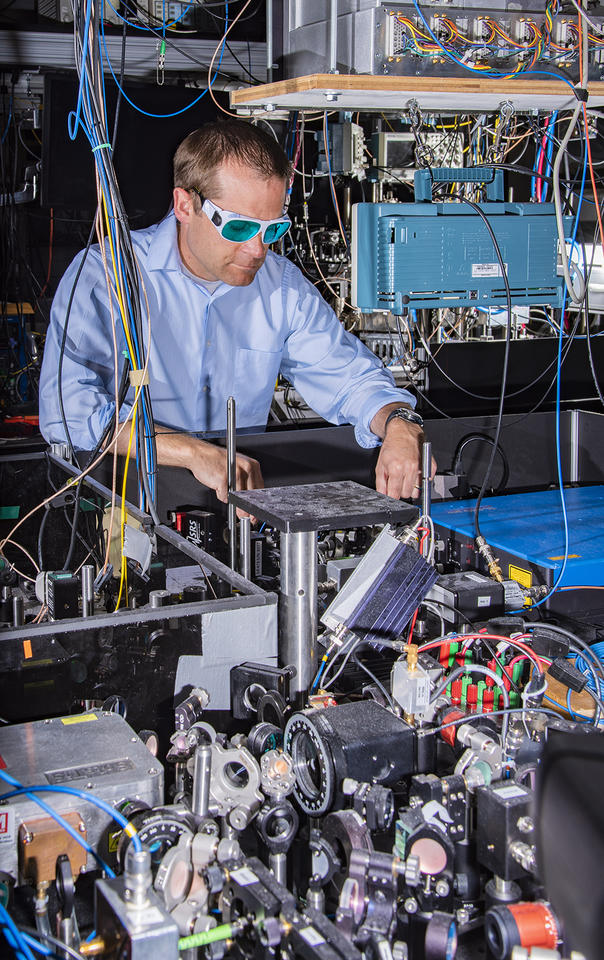
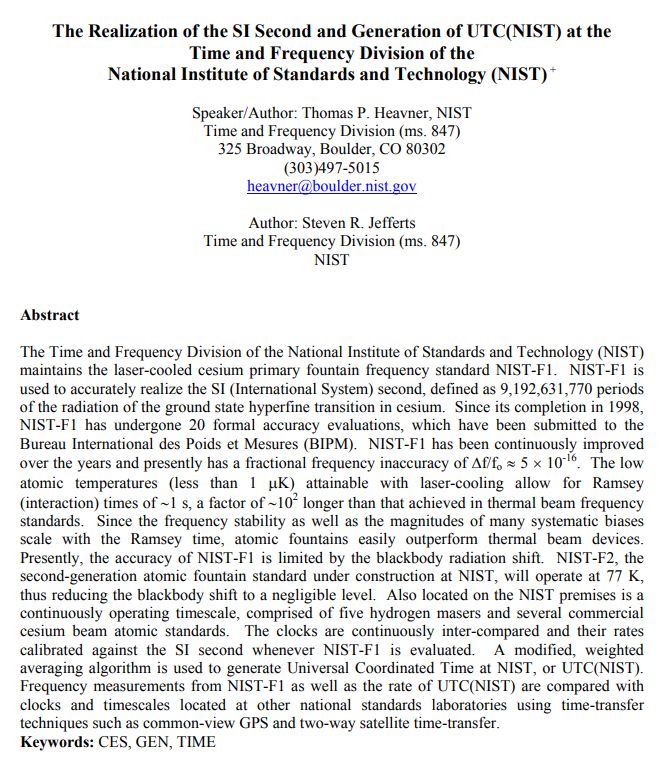
Just to be clear – you want to replace the cesium clocks in GPS satellites with pendulums? Because this would be more “democratic”?
If a GPS clock is off by just 1 millisecond, that translates into a reported position error of 185 miles per day, and that error accumulates day after day.
Of course there is appropriate if not necessary application of improving technology. Let’s just keep a Master Reference for sanity that is detached and can’t be so readily manipulated or obscured away from observation and verification. Every other time secrecy has been allowed, disaster has resulted.
Going back to the ancient Greeks, accurate timekeeping ***never*** has been accessible to the “peasantry”.
NIST has been busy busy redefining the base units — the meter is no longer a stick, the kilogram no longer a brick, the second no longer a pendulum swing. Instead, all depend upon the number of Cesium 137 atom vibrations. They have “relativised” all units; recently, they have suggested adjusting time period of the second (equivalent to shortening the pendulum chain) in order to correct for a tenth-of-a-second time different theorized to matter sometime within the next ten million years. These adjustments, now enabled, will never end. NIST is directly responsible for removing further the base units from human experience, understanding, approachability. Beware.
From a blog elsewhere — “Wash DC VERIZON no longer offers true “POTS” (Plain Old Telephone Service) copper-wire “land lines” — 100% is now digital via optical fiber. Segue — I’ve been looking back into the long push for “digitalia” in all things and find the trail via Jesu in Rome back to Greeks’ atomicity concepts. Once things are quantized, they may be quantified, stored, counted, controlled. The infinity inherent in analog systems confounds such control. NIST has been busy busy redefining base units such as meter, kilogram, second — instead of a stick, a weight, and the swing of a pendulum, the base units are now (since recently) all based on the number of vibrations of Cesium-137, further removing measurement from humanity and into digitalia. In true “slippery slope” fashion, not long after the “redefinition” of the second, a “correction” was imposed by NIST, to adjust for an anomalous ‘time slip’ of one-second in a quadrillion years — They are literally already screwing around with base definition of time, and not one single peep of caution or warning beyond mine have I seen anywhere online.”
Replies via the blog https://reinettesenumsfoghornexpress.substack.com/p/how-pagers-iphones-walkie-talkies/comment/69519865
“Profound and TRUE great comment write more this needs to be understood ,, I cant stand anything digital Analog is the real deal digital everything is so they can create the false MATRIX and link it with the demonic frequency dimension..”
“I know and this is also the basis to be able to block chain everything and call it the cure for centralised control, thinking that consciousness can be ‘learned’ and most of everything utterly stupid based on of some theoretical constructs derived from Darwinism- ok I’m conflating a lot but our world has completely become untethered from reality.”